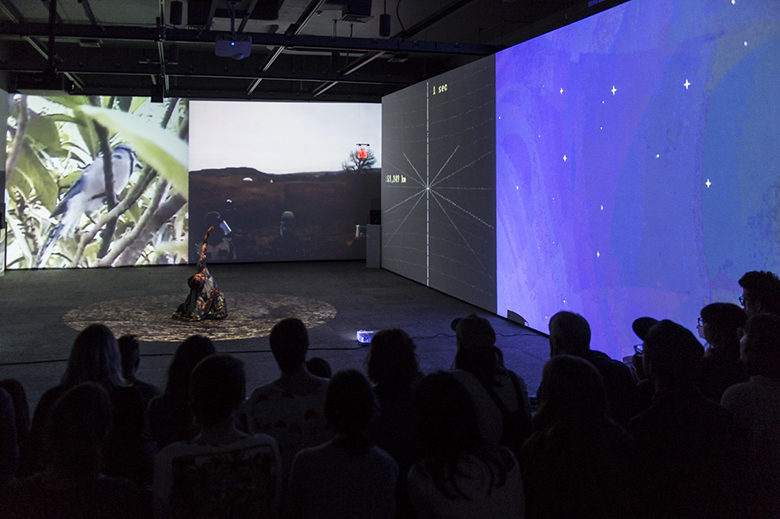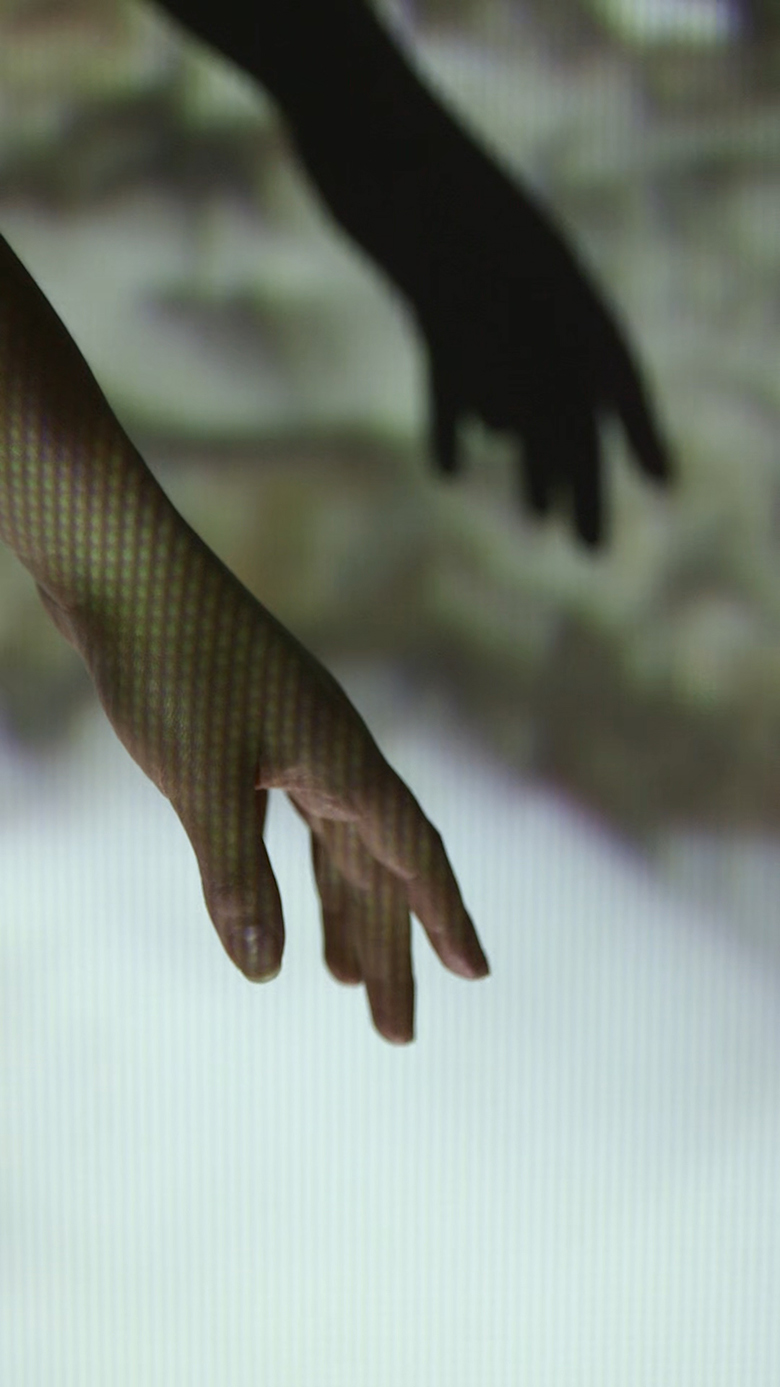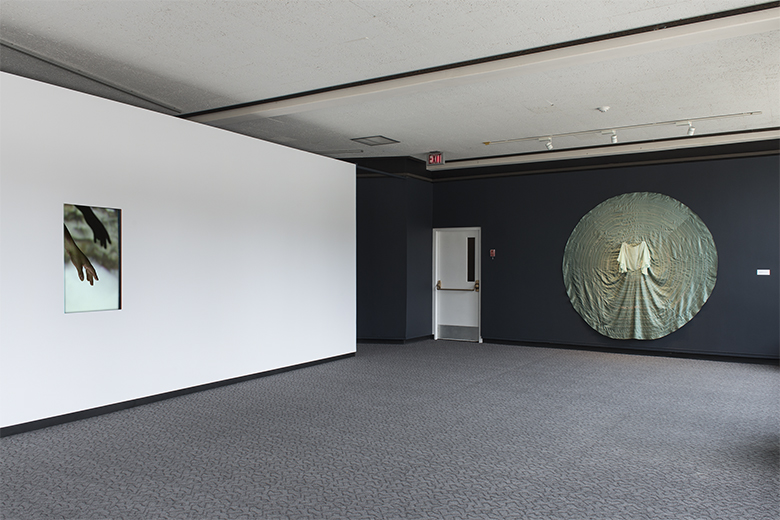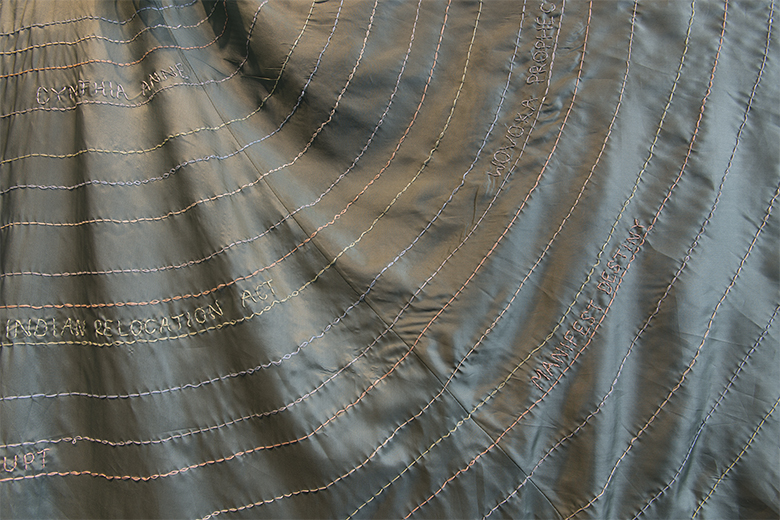When I was child growing up in a small town, my mother would indulge me in a fantasy that I possessed a magical power: the power to change traffic signals. I would wave my hands about, elaborately wiggling my small fingers and proclaiming, “CHANGE!!! CHANGE!!!” while my mother would read the traffic and adjusted her speed according to the staleness of the light. She never failed to protect this illusion, and with great patience, she continued to foster a magical form of creative thinking in me.
We lived in the country alongside the Yellowhead Highway, and would drive to collect our mail from the Canada Post community mailbox stationed about five minutes from our home. Each time my mother unlocked and opened the small metal door to collect our mail, I would place a small pebble always named Jaw-Jaw back into her unfurnished apartment. My mother celebrated my indulgence in this fantastic ritual until I was older when she confided, slightly embarrassed, that the postal carrier probably assumed we were playing a practical joke, always placing a single rock into our postbox. To stifle an imagination you require time, the frameworks of an institution, the parameters of acceptability, and an excuse to refrain from an empathic understanding.
It was March 29th 2017, opening night for Los Angeles-based artist Suzanne Kite’s exhibition Everything I Say is True at the Walter Phillips Gallery Satellite Space. We were ushered towards the rear of the Gallery for the performative portion of the work. The space was elusively dark; shadows engulfed the room, disguising all institutional signifiers. We gathered behind an invisible partition, gazing towards an imagined stage, a mirage created through the light emitted from six digital projectors.
I would wave my hands about, elaborately wiggling my small fingers and proclaiming, “CHANGE!!! CHANGE!!!”
Mysticism encroached on the space as Kite began to speak, reciting with a firm voice what felt like a theatrical abstraction of poetics, oscillating us in and out of a dream, winding us through intimate personal narratives to a backdrop of video vignettes: footage documenting the arrival of spring in the Rockies. Interjecting through the array of visual stimuli, Kite established a thesis of nonlinear time, describing her first experience of shifting through time, and the malleability of occupying two spaces at once. The synchronized visuals transitioned from HD footage of Banff National Park to an antiquated looping video of a blue jay bouncing between branches; she described a dream she once had of shapeshifting into a blue jay, viewed from above—an event that foreshadowed her first Lakota ceremony with her grandfather. She felt herself transform into a blue jay, and—perched on a branch veining off the limb of a tree—she peered down upon her family, gathered together on a picnic bench, sheltered from the sun by the shadow of the tree.
Kite’s intermittent silences punctuated her memorized script with deep pitches of audio that engulfed us within a sonic ambiance. The audience shared a unanimous quietness, consciously engaged as Kite tested our patience with intention, using silence and absence as an apparatus for further disproving linear time. In relation to the state of the audience, the gallery was—for this moment—a space open to critique the concreteness of colonial or institutional infrastructures such as incremental time. The drone of her orchestrated beat persisted like the repetition of breathing, or a resting heart rate. I was reminded of my own body's innate functions and the mechanics of organic rhythmics. They too now felt timed.
Positioning the measurement of time as a tool for colonial bodies to conquer Indigenous peoples, Kite countered objective assumptions of time with her performative thesis in support of a Lakota understanding of time. Best understood as a waiting for the right time, Indian Time is less tangibly attached to the mechanics of numerics. A simple synopsis of Indian Time would conclude that rather than existing at the centre of time, the individual is placed within a cycle of time. In theory, the individual must earn the patience to wait for the most appropriate time in that cycle, and rely on an interconnectedness with the environment and with others rather than on a digital or mechanical accumulation of numbers. Kite presents questions and also invites us to question the persistence of colonial authority and the way it thrives, shrouded in unnoticed anonymity. “In Lakota, past and present are much closer together,” Kite said. “For example, -ble means ‘I went/and I go’ and -mni kte- ‘I will go.’ If I think in Lakota, is there a difference between past and present?”
Gesturing to one of the walls, illuminated by a floor-to-ceiling projection, Kite’s open-palmed hand incited the transition of the visuals to project an animated rendering as she introduced Einstein’s continuum as evidence in support of her conflict with linear time. Kite did not restrict herself to the parameters of her more personal introduction, but instead proceeded to pair it with the proven logics of physics. The projections shifted again, introducing an animated form of the Minkowski space diagram, a diagram illustrating 4-dimensional spacetime first developed in 1908 by Hermann Minkowski, Einstein’s former mathematics professor.1 In the diagram—Minkowski’s independently developed graphical illustration of Einstein's continuum—two cones intersect at their vertices, akin to an elaborate hourglass; the future exists in the upper cone, while the past exists mirrored on the bottom. The present exists within the intersection of past and future cones, and the peripheries are defined as ‘elsewhere.’ The animation inhabited the screen, repositioned in various vantages to expose the infinite dimensions of time, and the failures behind concepts of linear time. This scientific development enlightened cosmology, initiating a baseline for further investigation into micro-structures such as atoms and macro-scenarios such as the universe, and intersections of both. As she explained the theory, I fell back into her proclamation from moments before: “Time, while appearing to be linear, is a flat circle. If time is collapsed, what has happened is happening NOW.” Kite has mastered a means of communicating a personalized passion towards contentions of colonial structures, while equally utilizing objective facts proven by physics to disprove historical timelines.
Kite presents questions and also invites us to question the persistence of colonial authority and the way it thrives, shrouded in unnoticed anonymity.
Hierarchies exist in what can be proven. Without the backing of objective truths and scientific data, communal knowledges are written off as myths, folklore, or old wives tales. I found myself slipping into contemplation while participating in Kite’s performance, almost as if I was answering questions presented to me in conversation. In one of these drifting moments, I recalled a recent commute, running errands between big-box stores to prepare for an exhibition; I caught the end of a CBC radio program claiming that the syncing of menstrual cycles was in fact a myth. The provided reason this communal knowledge was to be deemed myth was that it—according to the host of the program—had not been scientifically proven. I began to think of the validity of scientific knowledge, the resources required to conduct research to produce proof, and the affiliations of reciprocal exchange versus objective data. How much does the interest level of financial backers for scientific research decide the value of inherited knowledge? As critical bodies, we must question why this knowledge shared by sisters, friends, and mothers is illegitimate until proven otherwise by the frameworks of an accepted institution.
A repression exists in not accepting values and systems of knowledge held by cultures outside of the majority, due to the basic principles of hierarchy. This repression of responsible truths was and is a useful tactic in claiming control over indigenous peoples by settlers in order to colonize a new territory and assert sovereignty over a land that was already occupied. Knowledges inherited through teachings from Elders and ceremonial practices shared for the benefit of the community are considered to be responsible truths.2 These forms of truth are less tangibly proven through scientific evidence and thus these indigenous epistemologies do not hold superior value within colonized societies, as they are derived from a non-majority group. Intersecting responsible truths with theories of physics, and performative gesture with science, Kite alternatively presents these formats of knowledge as holding equitable value.
Without the backing of objective truths and scientific data, communal knowledges are written off as myths, folklore, or old wives tales.
Science, however, is only one of various colonial power strategies that have been implemented since the arrival of lost settlers on Turtle Island. References to Manifest Destiny during the performance underlined the role of religious authority in assuming the right to overtake land for the benefit of settlement. Kite spoke of Leonard Peltier, a recognized Native American activist and member of the American Indian Movement, who many believe was falsely convicted for the murder of two federal agents, and is currently condemned to life in prison. The presentation continued to elucidate a legacy of broken treaties and institutional structures disseminating policies of disrespect, concluding with images of these historical issues as they exist now: in footage captured by water protectors at Standing Rock. Through both visual cues and a spoken metaphor, Kite spoke of the miraculous support of a harem of buffalo that encroached the summit of Standing Rock in a moment of solidarity during protests against the Keystone XL pipeline.
On the morning following the performance, Kite and I sat together and shared familial anecdotes as a way of circumnavigating the work. We shared our childhood fantasies and mysticisms, considering too when objective truths began to suffocate our innocently creative beliefs. I told her how badly I wanted to truly believe in the magic of her performance, to truly believe that the gesture of her hand could advance the slides, or that she really was capable of reading and knowing someone was skeptical. Kite had stalled during the performance, asking the audience for their trust, assuring us she could not continue until we earnestly believed her. As we waited for our own earnest belief, I longed for the idea that she could persuade the audience to omit their institutional understandings in favour of her presented alternatives.
I thought of this longing as Kite told me about a faithful coin she carried with her everywhere as a child. She would diligently rub it to get herself out of trouble or to confidently exaggerate her knowledge when presented questions beyond her understanding. Although it is improbable that she possessed such varied knowledge at five years of age, I could assume that adults would have found themselves perplexed by her answers, perplexed as to the truth, due to the strength in her responses. We talked about rocks, how with their aged wisdom they may have found a means to communicate without language. How assuming our position at the top of the hierarchical order is failing us, and failing our capacity to creatively consider alternatives. How considering only the single perspective of linear time, and the icons represented in historical timelines, leaves a vulgarity to the limitless potentials of what has yet to be considered, proven, or true.







